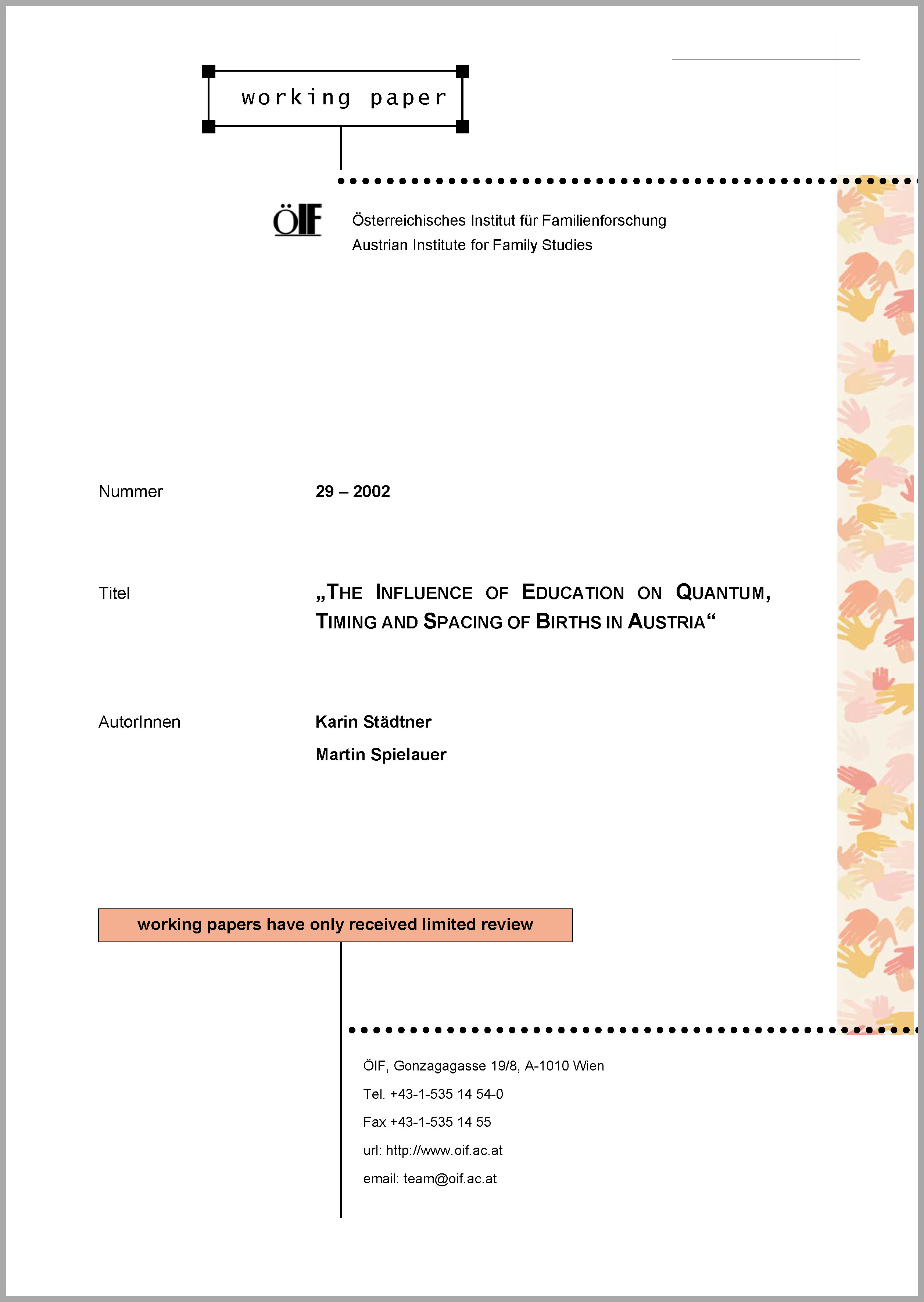The Influence of Education
The quantum, timing and spacing of births in Austria. Working Paper 29
Von: Martin Spielauer, Karin Städtner
Working Paper Nr. 29 | 2002 | 33 Seiten
The aim of this paper is to study the quantum, timing and spacing of births in Austria and their changes over time by educational groups and school leaving age. Rather than taking the age as such, we take the school leaving age as reference point in our analysis, as – with the exception of university drop-outs that are partly caused by pregnancy – very few women give birth while being in education. As the analysis shows, the recent overall increase of age at first birth can be observed in all educational groups and is not (only) the result of staying in the education system for a longer time.
As expected, parity progression rates vary considerably between different educational groups and follow different patterns of change. Changes of norms – i.e. to and from the two-child norm – seem to be more pronounced in urban areas, were drops in parity progression rates were biggest for higher educated women. As the educational composition of the population changes in the course of time, this will considerably influence overall fertility rates in future, even assuming unchanged individual fertility behavior of women of given educational groups.
This paper is also understood as background paper in the context of the ongoing development of the FAMSIM+, family microsimulation model, that shows fertility decisions along with other life careers, such as education, partnership and job careers. Besides other applications, FAMSIM+ will serve to study the impact of various dynamics, like changes of timing and educational changes, on fertility changes.
Download (PDF): The Influence of Education. Working Paper Nr. 29 | 384 KB

